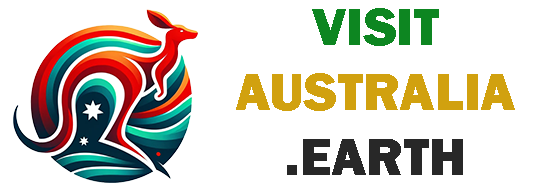The cultural and spiritual tapestry of Australia’s Indigenous people is both rich and ancient, with a history that stretches back tens of thousands of years. At the core of this vibrant culture is the concept of the Dreamtime – a multifaceted belief system that weaves together stories, landscapes, moral codes, and the very essence of existence. The Dreamtime transcends the realm of mythology or simple folklore. For Indigenous Australians, it’s a living philosophy that resonates in every aspect of their lives, from their moral compass to their connection with the land. For the wider world, the Dreamtime offers profound insights into a culture that thrived in harmony with nature, a message that seems all the more relevant in our modern, often fragmented world. Ed: Kevin Parker
The Essence of Dreamtime: Storytelling and Songlines
Dreamtime, or “Tjukurrpa” in the Western Desert language, is often defined as the period when ancestral spirits roamed the Earth, shaping landscapes, creating flora and fauna, and laying down the cultural and spiritual foundation for the Aboriginal people. It’s not just a ‘time’ in the past, but an ever-present reality that exists simultaneously with our perceived reality. This epoch encapsulates the genesis of life, nature, and everything in between.
The Dreamtime stories are not merely tales to entertain; they serve a deeper purpose – to educate, warn, preserve, and connect. They are passed down through generations as oral histories, songs, dances, and artworks. These stories not only explain natural phenomena but also offer insights into morality, social norms, and the connection between man and nature.
“The Dreamtime is the period in which life was created according to Aboriginal culture. Dreaming is the word used to explain how life came to be; it is the stories and beliefs behind creation. It is called different names in different Aboriginal languages, such as: Ngarranggarni, Tjukula Jukurrpa. In the Dreamtime, the natural world—animals, trees, plants, hills, rocks, waterholes, rivers—were created by spiritual beings/ancestors. The stories of their creation are the basis of Aboriginal lore and culture. And are also what are often painted by Aboriginal artists.” Aboriginal Contempoary.com

‘Songlines’, or ‘Dreaming Tracks’, crisscross Australia. These are the paths that the ancestral spirits took during the Dreamtime. Aboriginal groups use songlines to navigate vast distances, as each landmark along the way has a corresponding song describing it. To navigate the landscape is to sing it into existence, a powerful testament to the intertwined nature of geography and spirituality.
Read more about Songlines in our article Songlines: Navigating the Dreamtime and Modern World
Symbols and Art
Art is a medium through which Dreamtime stories find vivid expression. The iconic dot paintings, rock art, and bark paintings showcase episodes from the Dreamtime, drawing on symbols that have been employed for generations. This art serves both as a visual treat and as an educational tool, ensuring that traditions remain alive and relevant.
Modern Implications and Respect
Understanding the Dreamtime is not just an exercise in cultural appreciation. It’s a means to foster understanding, respect, and collaboration between Indigenous and non-Indigenous Australians. With rising global interest in environmentalism and sustainable living, the Dreamtime’s emphasis on living harmoniously with nature offers a model that many believe is worth emulating.
Furthermore, as issues around Indigenous rights, land claims, and cultural preservation gain traction in the socio-political sphere, having an insight into the Dreamtime is crucial. It underscores the deep-rooted connection between the Aboriginal people and the Australian landscape, and why land rights are not just political issues but spiritual ones as well.
Tiddalik the Frog: A Dreamtime Story
Long ago, in the Dreamtime, there lived a frog named Tiddalik. One morning, Tiddalik woke up with an insatiable thirst. He began to drink and drink, consuming all the fresh water in sight. As he drank, he grew, expanding until he had consumed all the water in the land.
With all the water inside Tiddalik, the landscape turned arid. Rivers dried up, billabongs became empty, and the land’s creatures began to suffer. Animals gathered to discuss the dire situation. They realized that unless Tiddalik released the water, the entire land would perish.

Various animals tried making Tiddalik laugh to release the water, but to no avail. The kangaroo jumped around, the echidna rolled into a ball, and the kookaburra sang its heart out, but Tiddalik remained unmoved.
Finally, Nabunum the eel stepped forward. He twisted and turned, contorting his long body into amusing shapes. Unable to contain himself, Tiddalik burst into laughter, and as he did, water gushed forth, refilling the lakes, rivers, and billabongs.
Water flowed back into the land, and life was restored. But the landscape was forever changed, with new rivers and waterways created from Tiddalik’s outpour. The animals rejoiced, and Tiddalik, now just a regular-sized frog, learned the importance of moderation.
How the Kangaroo Got Her Pouch
There appear to be different versions of this story, as we can imagine given the diversity of traditional owner cultures. We have included a lovely telling of the tale in video form at the bottom. Ed KP
Long ago, during the Dreamtime, there was a young kangaroo named Maloo. Unlike the kangaroos we know today, Maloo did not have a pouch. She had a joey, and without a pouch, it was challenging for her to protect him from the dangers of the land.
One day, a massive bushfire swept across the land, threatening all the animals. Maloo, desperate to save her joey, put him on her back and began to hop as fast as she could to escape the flames. However, the joey kept slipping off, and it was getting harder for Maloo to keep him safe.
Seeing her struggle, a wise old wombat named Womby approached her. Womby had crafted a makeshift pouch using bark and vine for his own little ones. Impressed by Maloo’s determination to save her joey and moved by her plight, he decided to give his pouch to her.
Gratefully, Maloo attached the bark pouch and placed her joey inside. The pouch shielded her joey from the flames, smoke, and heat. Thanks to Womby’s generous gift, they were able to safely hop away from the danger.
After the fire, the spirits of the land, having witnessed Maloo’s courage and Womby’s kindness, decided to reward them both. They turned Womby’s makeshift pouch into a permanent part of Maloo’s body, allowing her and all future kangaroos to carry their joeys safely.
For Womby, they granted him the ability to dig tunnels quickly, ensuring he and his descendants would always have a safe refuge underground, away from any future fires.
And that is how, according to the tale, kangaroos got their pouches and wombats their burrowing ability.
Read more Aboriginal Dreamtime stories on Dreamtime.net.au



